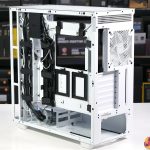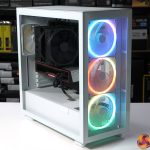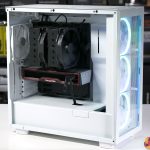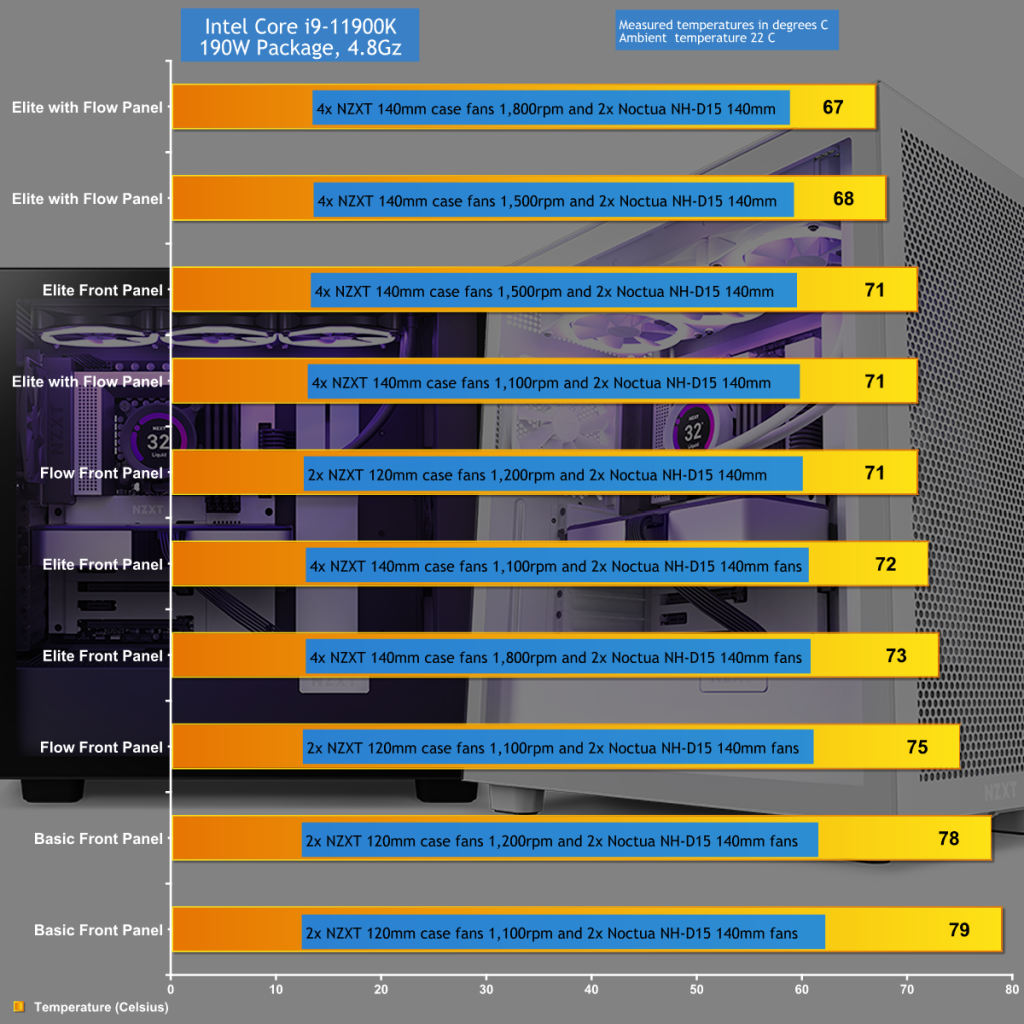You are getting three reviews for the price of one today as NZXT has launched a series of cases named H7 that are closely related. The base model is H7, then we have the Mesh version H7 Flow, and at the top of the tree is the H7 Elite. With the previous H510 Elite and H710i leaving room for improvement, it's time to find out what NZXT is bringing to the table in 2022.
Timestamps
00:00 Start
00:27 Background
01:05 H710, Plastic pegs!
03:01 H7 Elite
04:50 H7 Base Model and Flow
06:35 Elite – RGB fan hub
07:07 Flow stripped – sharing panels07:40 Fan support and filters
08:27 Leo’s guess
09:01 Some niggles
09:23 Hardware for the build
09:55 Storage capabilities
11:10 Accessories and other features
11:44 Front of the case
12:18 Installing the hardware
13:07 Noise Testing
15:58 Thermal Testing and Results
18:45 Leo’s Closing Thoughts
Main features
- Tool-less panels and SSD tray for easy installation
- Tempered glass side panel that showcases the beauty of the case.
- Front supports up to 3x 140mm fans, top supports 3x 120mm fans, and rear 1x 140mm fan.
- Front and top side support up to 360mm radiator, rear supports 140mm radiator.
- USB 3.2 Gen 1 Type A x 2, USB 3.2 Gen 2 Type-C x 1, and Headset Audio Jack x 1 on the top panel.
- All-new cable management system and cable bar
- Supports vertical optional Vertical GPU Mounting Kit with Gen 4 PCIe Riser
Specification:
- Motherboard support: ATX, Micro-ATX, Mini-ITX.
- Power supply support: ATX
- Expansion slots: 7
- Included fans:
- H7 and H7 Flow 2x F120Q 1,200rpm at front and rear
- H7 Elite 3x F140RGB 1,800rm front, 1x F140Q 1,200rpm rear.
- Fan mounts: 3x 120mm/140mm front, 3x 120/2x 140mm roof, 1x 120/140mm rear
- Radiator mounts: 360mm/280mm front, 360mm/280mm roof, 120mm/140mm rear
- 5.25-inch optical drive bays: None
- Internal drive bays: 2x 3.5-inch/2.5-inch, 4x 2.5-inch.
- Front I/O ports: 2x USB 3.2 Gen 1 Type-A, 1x USB 3.2 Gen 2 Type-C, Headset Jack
- Dimensions: 480mm H x 505mm D x 230mm W
As we demonstrate in our video the three models of NZXT H7 are based on the same core chassis and they are defined by the front panel and the configuration of the fans. The showstopper is the H7 Elite which has three RGB fans at the front of the case that provide an impressive lightshow.
Cooling Performance
Test System:
- Processor: Intel Core i9-11900K (8 cores/16 threads)
- CPU Cooler: Noctua NH-D15 chromax.black
- Motherboard: NZXT N7 Z590
- Memory: 32GB Corsair Vengeance LPX DDR4-3600MHz
- Graphics card: Sapphire Radeon RX6800 XT 16GB
- Power supply: NZXT C1000 Gold 1000W
- SSD: Sabrent Rocket 4.0 M.2 NVMe
- OS: Windows 11
CPU Cooling
Graphics Cooling
Cooling Performance Overview
There is a ton of information in these charts and the obvious takeaway is that the Flow front panel works best when combined with the 140mm fans running at high speeds. That will come as no surprise but when you refer to our video you will hear the huge changes in noise levels and there are times when the H7 can be very noisy indeed. In other words, the H7 can work well however you will need to strike a balance between noise and cooling.
Closing Thoughts
Our starting point for this review of the H7 family starts in 2019 with the H510 and H710, which were interesting cases that leant heavily on looks and styling, and rather less on performance.
It was clear from the first moment the three models of H7 have been improved, starting with the addition of a Flow model that has a front panel that clearly has the potential to work well. In addition we were delighted to find the panels are tool-free as that makes life considerably easier.
Those changes to the panels are welcome, however they fix problems that should never have existed in the first place. When we dug in further and found the specification of the fans made little to no sense it felt like 2019 all over again.
The high end Elite has three ARGB 140mm PWM fans at the front of the case that are practically sealed behind glass. Essentially that means they are intended to supply a light show and the cooling is a mere sideshow. By contrast the H7 and H7 Flow only pack two 120mm fans which will clearly save on the Bill Of Materials however the fans are fairly basic and are voltage controlled, and that is a real shame on a case priced at £120.
NZXT can fix the H7 with some tweaks that fall far short of an overhaul but right now they still have work to do.
You can buy the NZXT H7 and H7 Flow for £119.99, and the H7 Elite for £179.99.
Discuss on our Facebook page HERE.
Pros:
- Good support for radiators, fans and storage.
- Price is fair.
- Cable management works well.
- Decent front IO panel with USB Type-C.
Cons:
- Airflow in the Elite is bizarre. Three PWM fans behind glass!
- Basic and Flow versions have 1,500rpm fans with voltage control.
- Black cases have glass which is very heavily tinted.
- Elite RGB and fan control requires NZXT CAM software.
KitGuru says:The NZXT H7 family has potential, however the performance of the fans and airflow caused your reviewer a fair amount of frustration.
 KitGuru KitGuru.net – Tech News | Hardware News | Hardware Reviews | IOS | Mobile | Gaming | Graphics Cards
KitGuru KitGuru.net – Tech News | Hardware News | Hardware Reviews | IOS | Mobile | Gaming | Graphics Cards






















